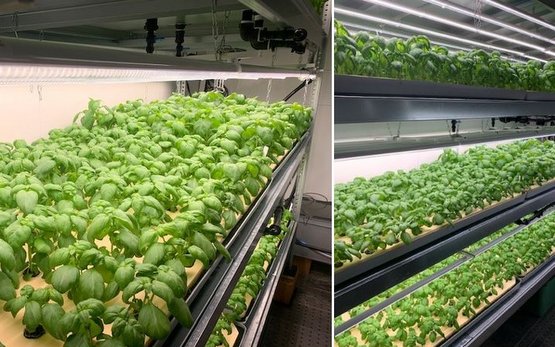
Vertical Farming allows vegetables and herbs to be grown in vertically arranged layers with up-to-200-times- greater yields and an up-to-250-times-lower water consumption than for field-grown crops.
In the near future, this sort of production in a controlled environment could meet consumer demand for locally grown produce year-round. There are still hurdles to be overcome in terms of energy consumption and the variety of species cultivated, however. Meeting these challenges is part of Agroscope’s mission within the context of an Innosuisse research project on vertical farming in partnership with YASAÏ, Fenaco and the ZHAW.
At its Conthey site, Agroscope has set up a pilot plant for vertical farming in order to study the production of various plant species.
Nutrient requirements and light quality as well as various growing techniques will be tested on basil, rocket, shiso, mint and coriander crops.
Up to 12 varieties of each of these species will be examined carefully to determine not just the most productive varieties, but the tastiest ones as well.
Special focus will be placed on the profitabilty and sustainability of vertical farming, including in comparison with greenhouse and field production.
Finally, the possible effects of the different production systems and varieties on the quality and nutritional value of the produce will be examined and the findings passed on to the sector as well as consumers.
Contacts





